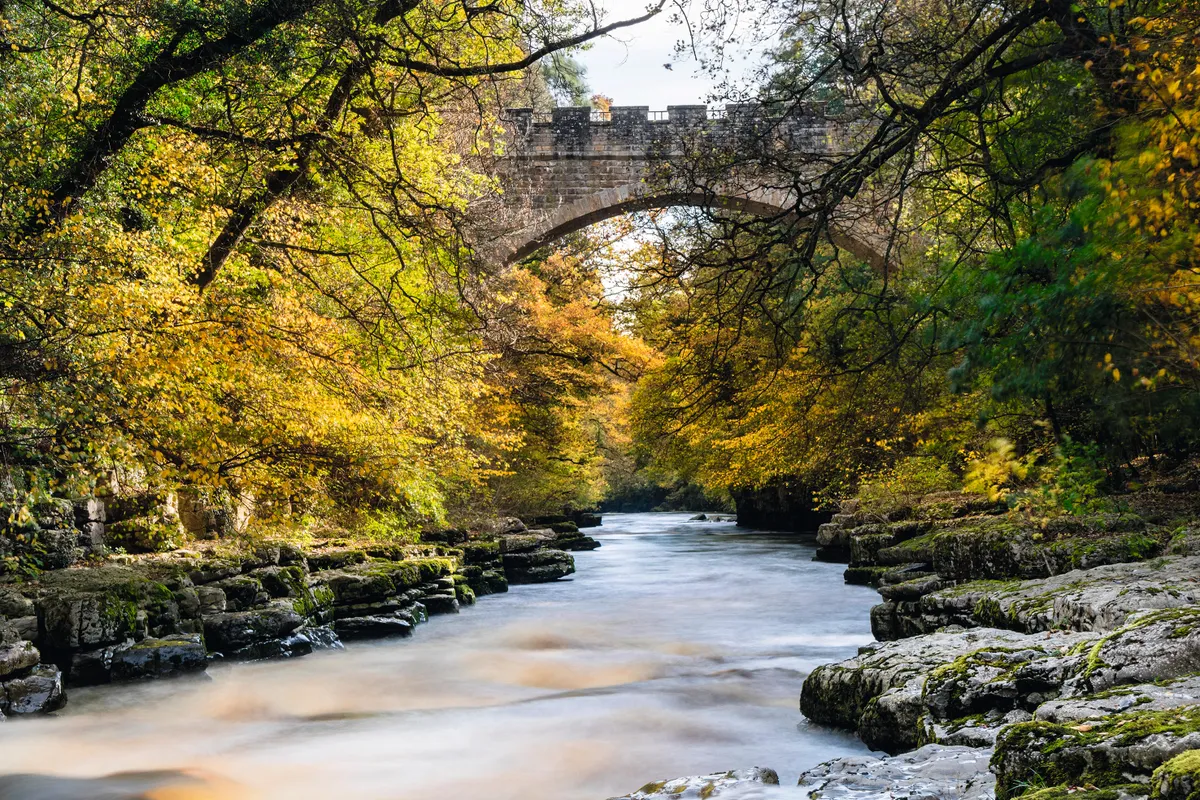I was fishing on the Somerset Levels at the end of the season, tucked up against the stanchion of a bridge, squinting to make out my float in the gathering gloom of dusk. I heard the footpath gate open and close on the opposite bank and the chatter of a young family spilled onto the bridge above.
Then came the count. “One, two, THREE!” followed quickly by three sploshes and the appearance of three faces peering expectantly over the parapet. Their dropped sticks appeared, arguments briefly aired over whose had appeared first, and then they noticed an angler hunched below them.
I smiled away their apology and I genuinely didn’t mind. The fish weren’t biting and besides, who doesn’t appreciate a game of ‘Pooh Sticks’? Bridges over rivers are for everyone to enjoy and not just for anglers to seek fish beneath. And the view from a bridge, or a riverbank, or from the rocky edge of a moorland stream, can deliver nourishment for the soul. Water is fascinating and running water can be utterly captivating.
I do not need to be clutching a fishing rod to enjoy the company of a river. It is true that angling gives me purpose and a reason for being there – while the fishing line itself creates a connection between myself and the life within the water. But I do not need to learn every detail of the plot in order to appreciate the story, and a river tells a different tale every day, as it responds to the weather in level or colour and to the light through refraction and reflection. And the surface, no matter how slow the flow or small the course, is ever changing. Pushing over weed and rocks, around the roots of alders and willows or man-made structure such as weirs and bridges.

Winding down
A good river walk should always begin at a bridge. I like to look down upon the surface and ponder the movement and the way in which the river cuts such a different path to my own. Human life rattles above it in cars or trains, in bustle and commute, while beneath, the water moves at a pace and direction of its own choosing. As I step down from the bridge and join the river on its journey, I am leaving the stresses and anxieties of my life behind for a short while. They will still be there when I return, of course, but I will be in a better frame of mind to cope when I collect them. In the meantime, I will allow the river to lead me through the landscape. Always constant, yet also moving in a different direction to Man’s whim.

The majority of our towns and cities were founded close to a river or stream, providing a source of drinking water, but also offering transport, potential food, energy through the turning of millwheels, and a vital component of housebuilding or industry. Despite our efforts, though, a river can never be truly tamed, particularly when responding to heavy rainfall. As a result, and when not in flood, the river itself will keep a relatively low profile and in some cases, such as the lost streams of London, sink beneath the ground to vanish from sight altogether. As a result, our routes and routines see us tread non-watery paths, and we must actively seek out the company of a river should we want it. Once there though, we can find an altogether different world.
More related content:
- 7 clean UK river swims
- Ellie Harrison: dragonflies are the James Deans of the riverbank
- Podcast: how the River Severn is being unlocked for wildlife
River Severn./Credit: Getty

Ribbon of life
A healthy river is rich in plant and invertebrate life that in turn provides food for other species. Within the water, fish drift beneath the weed fronds, occasionally rising to take hatching flies from the surface. Herons and little egrets stalk the margins, while grey wagtails and dippers flick and bob. A river is a ribbon of life, and even in a city centre there is the chance of something extraordinary, like the dive of an otter or shimmering blue flash of a kingfisher. And beyond the wildlife is the water itself. The movement and swirl, a surface that slips in one moment as smooth as glass but then riffles and skips over gravel or stone. Here and there are eddies formed on bends or below structures, the current folding back upon itself in a long slow, roll. The surface dimpled by fish-fry and danced upon by pond skaters. The crease that forms along its edge marks the point where fast water meets slow, and the patterns swing and sway like smoke rising on a gentle breeze.
Watching moving water can be almost hypnotic, a chance to lose your mind to the shifting current with a soothing soundtrack full of trickle, burble and birdsong. Walking alongside a river can be equally relaxing, an ever-changing companion who might nudge you occasionally with word of something unexpected or wondrous. And try and cross a bridge without looking over the edge or enjoying the simple pleasure of a game of Pooh Sticks.
In fact, it was Winnie the Pooh, with a hand from creator AA Milne, who caught the magic of a river rather perfectly.
“Sometimes, if you stand on the bottom rail of a bridge and lean over to watch the river slipping slowly away beneath you, you will suddenly know everything there is to be known.”
It’s rather lovely, isn’t it?
Main image credit: The River Lune near Lancaster flowing through lush green countryside with Ingleborough on the far horizon/Credit: Khrizmo, Getty

